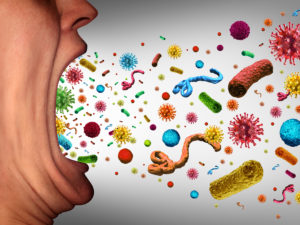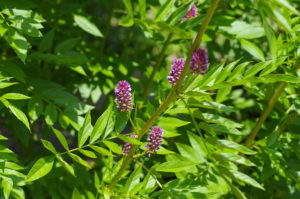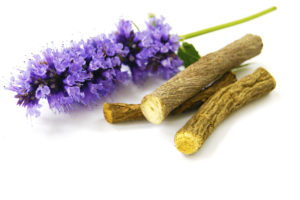Coronavirus (NOT COVID-19) – What can you do? Part 3 (Licorice)


Now, let's discuss how licorice can help with coronvirus'.

Sorry, not this kind!

After SARS the search began for a substance (drug or otherwise) to address the infection.?
Of all the compounds tested for antiviral activity (some were drugs) glycyrrhizin out performed, by leaps and bounds, and presented with the least amount of adverse effects.

As with sambucus, glycyrrhizin, in order to fully inhibit the SARS virus, required pre-infection and post-infection treatment. The concentration that completely blocked the virus was 4000mg/L.
As with my discussion on sambucus it is imperative for you to start taking this herb prior to exposure and continue taking it were you to become infected with COVID-19.
In this study the mechanism by which glycyrrhizin functions was not determined but the researchers proposed a possible role for the compound glycyrrhizin and its aglycone metabolite 18-beta glycyrrhetinic acid, which results in an increased nitrous oxide synthase and the consequent production of nitric oxide in macrophages.
Read the the full article by clicking here.

In another study (animal study) intravenous glycyrrhizin was found to decrease the cytokine storm, which when active results in server respiratory distress
When taken orally glycyrrhizin converts to the aglycone metabolite 18b glycyrrhetinic acid and in some studies was shown to be more effective than the intravenous form (glycyrrhizin).
Read the the full article by clicking here.
Glycyrrhizin has been shown to have the following activities:
- Anti-hepatitis activity (supports liver function)
- Anti-inflammatory activities via suppressions of prostaglandin production, histamine release, and histamine synthesis (decreased histamine calms down the part of the immune system that causes the "out of control" immune response that can result in a more severe illness response).
- Inhibits the complement system. The part of your immune system that enhances antibody activity and immune cells that are tasked with cleaning up pathogens.
Are there any negative side effects to taking glycyrrhizin?
Yes!
- Because of glycyrrhizin's activity on the adrenal glands it can increase aldosterone, which can increase your blood pressure.
- It can also cause hypokalemia (low potassium levels), which can contribute to the following signs and symptoms: heart arrhythmia, weakness, fatigue, cramps, digestive issues, aching muscles, tingling and numbness, and breathing difficulties.
- A solution to this, for folks who have risk factors, is to monitor BP while taking it and have blood labs done to check potassium.
So, how do you take licorice?
- Of course you can take a capsule of the dried herb but an alcohol tincture is much more effective.
- If taking a capsule two 400mg capsules twice a day away from food.
- If taking a tincture take 1 teaspoon three times a day preferably away from food. Taking this in drop doses simply is not enough. Remember, this is not a drug and does not have a drug-like effect.
- If you combine this with sambucus you can take 1 tsp of the combined tincture three times a day.
Please consult with your physician before starting any herbal medicine!
CRITICAL NOTE: COVID-19 is a novel coronavirus and seems to break all the rules so please, do not misunderstand this to be applicable to COVID-19!!
Other references...if you need some more reading.
Nomura, T., et al., Effects of Traditional Kampo Drugs and Their Constituent Crude Drugs on Influenza Virus Replication In Vitro: Suppression of Viral Protein Synthesis by Glycyrrhizae Radix. Evid Based Complement Alternat Med, 2019. 2019: p. 3230906.
Sun, Z.G., et al., Research Progress of Glycyrrhizic Acid on Antiviral Activity. Mini Rev Med Chem, 2019. 19(10): p. 826-832.
Ramalingam, M., et al., Phytochemical and Pharmacological Role of Liquiritigenin and Isoliquiritigenin From Radix Glycyrrhizae in Human Health and Disease Models. Front Aging Neurosci, 2018. 10: p. 348.
Some reputable source you can rely on...



How to make a natural form of hand sanitizer?
Mix 2/3 cup 99% rubbing alcohol with 1/3 cup aloe vera gel and put in a empty pump bottle.

















Leave a Reply
You must be logged in to post a comment.